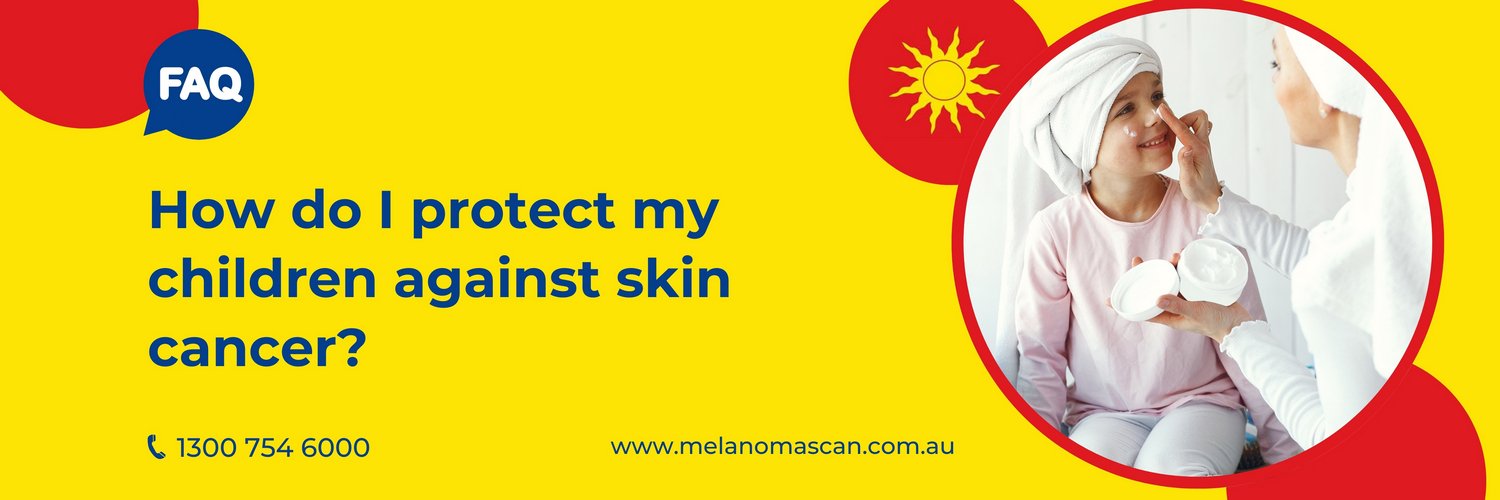Sun damage at a young age is potentially the most dangerous, because the skin is thin and delicate and may burn more easily. It is also the time when sunburn is most likely to result in freckling and mole formation, which are both markers for people at risk of future skin cancers. In fact, a mole count over forearms is an indication of future melanoma risk, with high mole counts being associated with increased lifetime risk of melanoma. Children need to be protected from sun damage and in particular sun burn with hats, sunglasses, protective clothing (shirts, rash vests), high potency sunscreens (50+ SPF recommended) and avoidance sun exposure in the hottest part of the day. Every sunburn contributes to an increased risk of skin cancer in future and there may be a very long (decades) delay before the skin cancer appears. Skin cancers occurring after a single sunburn has been documented, with a delay of 40 years between the sunburn and the eventual cancer formation. Regular sunscreen application for skin types susceptible to sun burn can prevent accidental sunburns, and lead to a reduced risk of future skin cancers.
Most children are at very low risk of skin cancers, so regular skin checks are not routinely recommended unless there are particular concerns. While skin cancers including melanoma are rare, they do occur, so if there is a mole or spot that is changing or growing at an accelerated rate, or looks odd or different to every other mole on the child’s body, then they should be checked to ensure it is not a cancer.
Protecting Your Children from Skin Cancer: Sun Protection Tips
Exposure to the sun's harmful UV rays can have detrimental effects on our skin, especially for children whose skin is more delicate and prone to damage. Ensuring proper sun protection for your children is crucial in preventing the risk of skin cancer later in life.
Sun Protection against UV
Why is sun protection important for children? Effective sun protection is essential as children have sensitive skin that is more susceptible to skin damage from UV exposure. Without adequate protection, there is an increased risk of developing skin cancer in the future.
What are the risks of not using sun protection? Not using sun protection exposes children's skin to harmful UV rays, leading to skin damage and an elevated risk of skin cancer development.
How can you effectively protect your child from the sun? Ensuring good sun protection involves a combination of measures such as applying sunscreen regularly, seeking shade, and wearing protective clothing to shield the skin from harmful UV rays.
Sunscreen and Skin Cancer
How does sunscreen help prevent skin cancer? Quality sunscreen forms a protective barrier on the skin, blocking harmful UV rays that can contribute to skin cancer development.
What type of sunscreen is best for children? When choosing sunscreen for children, opt for broad-spectrum formulas with a high UV protection factor to ensure optimal sun protection.
What SPF should you look for in sunscreen? Look for a minimum SPF of 30 or higher to effectively shield your child's skin from damaging UV rays that can lead to skin cancer.
Skin Cancer in Children
What are the signs of skin cancer in children? Watch for unusual moles, sores that don't heal, or changes in existing moles on your child's skin, as these could indicate a potential risk of skin cancer.
How common is skin cancer in children? While less common than in adults, skin cancer can still affect children, making regular skin checks essential for early detection and treatment.
What factors contribute to skin cancer in children? Factors such as UV exposure, type of skin, and sun protection practices play a role in the development of skin cancer in children.
Protective Clothing and Sun Safety for reduced sun exposure
How does protective clothing help in sun protection? Wearing sun protective clothing shields the skin from harmful UV rays, providing an extra layer of defence against skin damage and skin cancer.
What should children wear to stay safe in the sun? Opt for lightweight, long-sleeved shirts, wide-brimmed hats, and sunglasses to safeguard your child's skin and eyes from UV exposure.
Are there clothing materials that offer better sun protection? Look for fabrics with a tight weave and darker colours, as they offer superior sun protection compared to light-coloured, loosely woven garments.
Sun Protection Measures for Babies and Children
Aside from sunscreen, what other measures can protect children from the sun? Seeking shade during peak UV hours, staying hydrated, and wearing sun-protective clothing are all essential components of comprehensive sun protection measures.
How important are sunglasses in sun protection? Sunglasses not only shield the eyes from UV rays but also reduce the risk of eye damage and skin cancer around the delicate eye area.
Essential awareness of sun protection times
What are the best times to practice sun protection? It is crucial to practice sun protection all year round, especially during summer months and between 10 am and 4 pm when UV levels are at their highest.
Regular Skin Checks
Most children are at very low risk of skin cancers, so regular skin checks are not routinely recommended unless there are particular concerns. While skin cancers, including melanoma, are rare, they do occur, so if there is a mole or spot that is changing or growing at an accelerated rate or looks odd or different to every other mole on the child’s body, then they should be checked to ensure it is not cancer.


 Prevention Tips
Prevention Tips Early Detection
Early Detection Understanding Skin Cancer
Understanding Skin Cancer Success Stories
Success Stories Lifestyle and Skin Health
Lifestyle and Skin Health Advances in Treatment
Advances in Treatment Community & Events
Community & Events For Families
For Families What's Happening at Melanoma Scan?
What's Happening at Melanoma Scan?